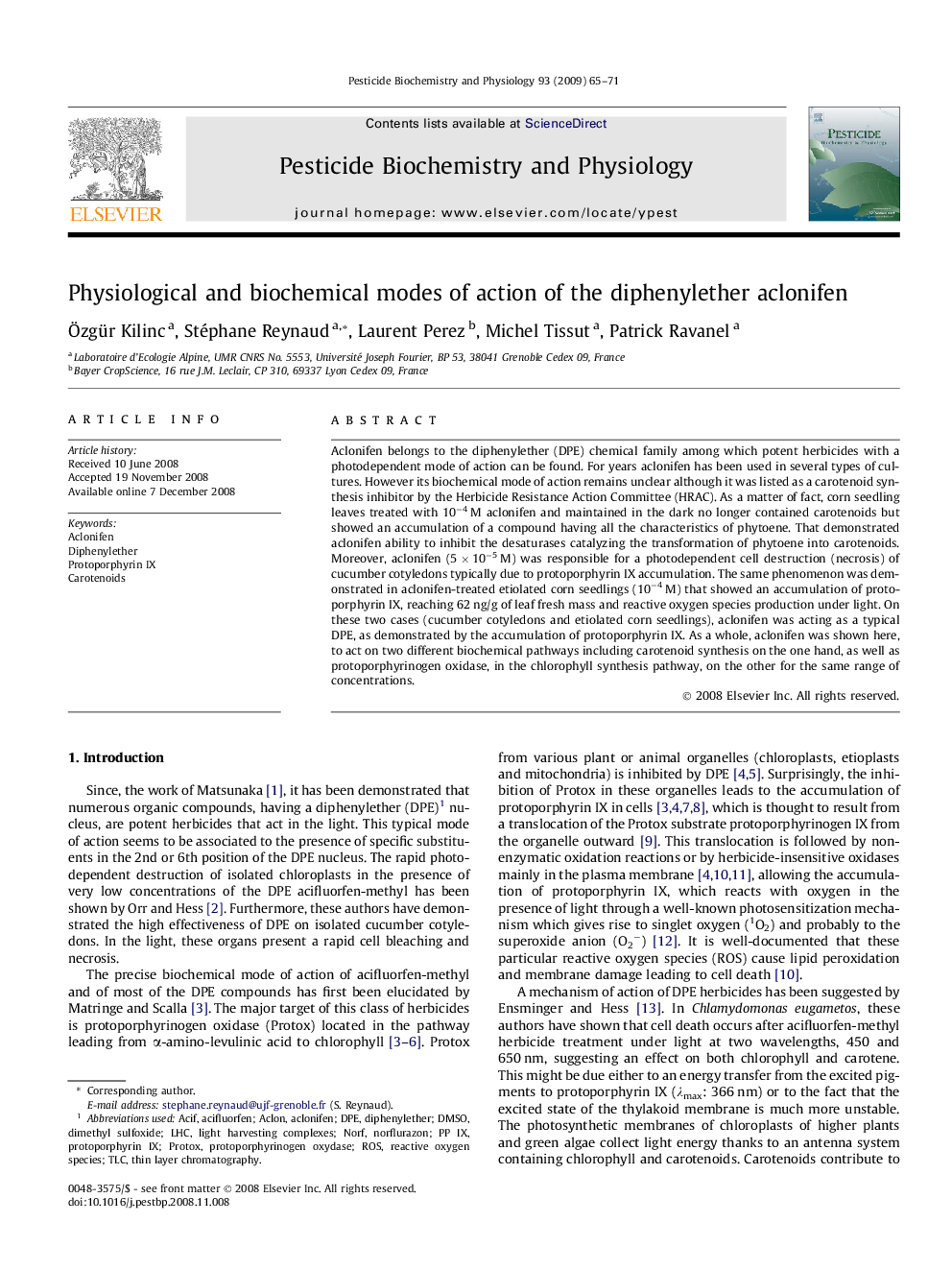| کد مقاله | کد نشریه | سال انتشار | مقاله انگلیسی | نسخه تمام متن |
|---|---|---|---|---|
| 2009611 | 1066676 | 2009 | 7 صفحه PDF | دانلود رایگان |

Aclonifen belongs to the diphenylether (DPE) chemical family among which potent herbicides with a photodependent mode of action can be found. For years aclonifen has been used in several types of cultures. However its biochemical mode of action remains unclear although it was listed as a carotenoid synthesis inhibitor by the Herbicide Resistance Action Committee (HRAC). As a matter of fact, corn seedling leaves treated with 10−4 M aclonifen and maintained in the dark no longer contained carotenoids but showed an accumulation of a compound having all the characteristics of phytoene. That demonstrated aclonifen ability to inhibit the desaturases catalyzing the transformation of phytoene into carotenoids. Moreover, aclonifen (5 × 10−5 M) was responsible for a photodependent cell destruction (necrosis) of cucumber cotyledons typically due to protoporphyrin IX accumulation. The same phenomenon was demonstrated in aclonifen-treated etiolated corn seedlings (10−4 M) that showed an accumulation of protoporphyrin IX, reaching 62 ng/g of leaf fresh mass and reactive oxygen species production under light. On these two cases (cucumber cotyledons and etiolated corn seedlings), aclonifen was acting as a typical DPE, as demonstrated by the accumulation of protoporphyrin IX. As a whole, aclonifen was shown here, to act on two different biochemical pathways including carotenoid synthesis on the one hand, as well as protoporphyrinogen oxidase, in the chlorophyll synthesis pathway, on the other for the same range of concentrations.
Journal: Pesticide Biochemistry and Physiology - Volume 93, Issue 2, February 2009, Pages 65–71